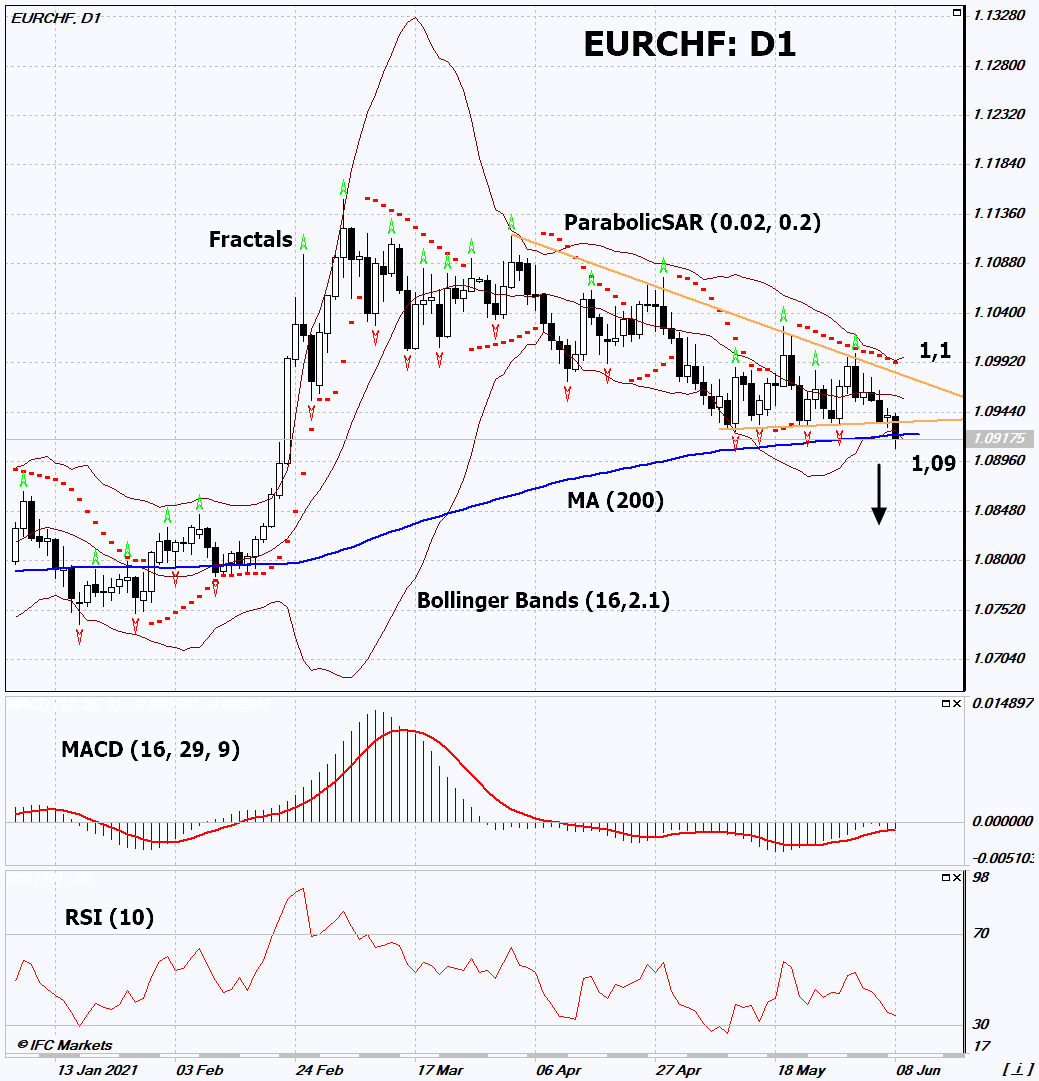Recommendation for EUR/CHF:Sell
Sell Stop : Below 1,09
Stop Loss : Above 1,1
RSI : Neutral
MACD : Buy
MA(200) : Sell
Fractals : Sell
Parabolic SAR : Sell
Bollinger Bands : Sell
Chart Analysis
On the daily timeframe, EURCHF: D1 went down from the triangle. Number of technical analysis indicators have formed signals for further decline. We are not ruling out a bearish move if EURCHF falls below its latest low: 1.09. This level can be used as an entry point. Initial risk limitation is possible above the last upper fractal, Parabolic signal and upper Bollinger line: 1.1. After opening a pending order, move the stop to the next fractal maximum following the Bollinger and Parabolic signals. Thus, we change the potential profit / loss ratio in our favor. The most cautious traders, after making a deal, can go to the four-hour chart and set a stop-loss, moving it in the direction of movement. If the price overcomes the stop level (1.09) without activating the order (1.1), it is recommended to delete the order: there are internal changes in the market that were not taken into account.
Fundamental Analysis
Getting ready for the next meeting of the European Central Bank (ECB). Will EURCHF quotes continue to decline? Downward movement means strengthening of the Swiss franc and weakening of the euro. The ECB meeting will take place on June 10th. No change in the 0% rate is expected. However, the European regulator may extend the Pandemic Emergency Purchase Program or change its parameters. ECB now spends 20 billion euros a week on buying back bonds and other assets. At the same time, preliminary inflation in the Eurozone in May reached 2% in annual terms, which is the highest since October 2018. The asset repurchase program is influenced by inflation, but the ECB has periodically stated that it is targeting core inflation, which is now much lower than normal at 0.9%. Slowdown in the German economy in the form of a fall in the German ZEW Economic Sentiment Index in June may serve as an argument for maintaining economic stimulus. In turn, positive data on the labor market came out in Switzerland in May. Unemployment fell to its lowest level since March 2020 at 3%.
